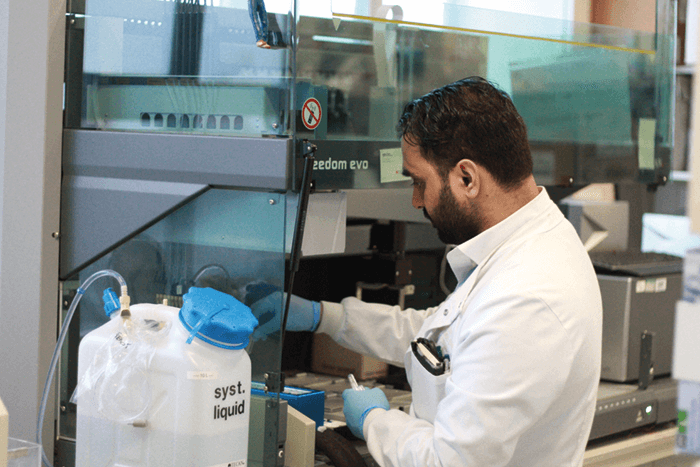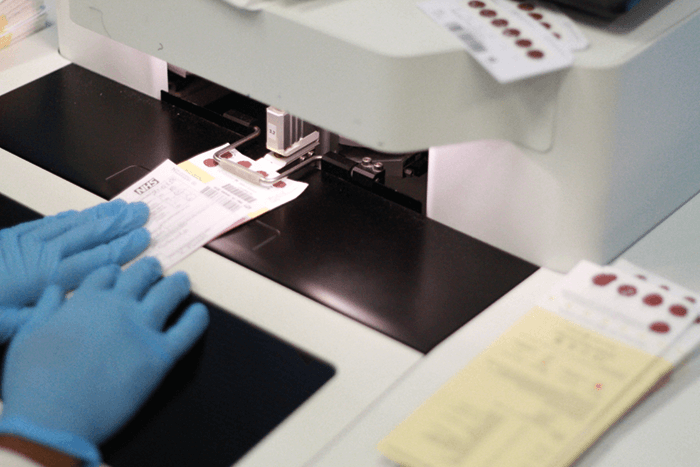In this laboratory, industry-funded posts complement our research. One of our staff members, Jonathan Lambert, has just finished a PhD on Fabry disease – both the diagnosis and the disease mechanism – that was funded jointly by his academic institution and by an industry partner. Now, another industry organization has provided two years of funding for him to set up an enzyme assay for asparaginase, which will be used in leukemia for treatment efficacy monitoring. We never expected this laboratory to be working on leukemia – but because we do enzymology so well, the company wanted to recruit one of our enzymologists. And we benefit as well: when Jonathan’s grant finishes next year, his assay may be rolled out into the NHS as a diagnostic or monitoring test for leukemia patients. It’s a good relationship.
We strongly emphasize the importance of translational research at GOSH; you might set up a new enzyme assay to use as a diagnostic tool – and, if it works, it will be in clinical use very quickly. Everything we do here, we do for our patients and our doctors, so the impact is immediately visible. You can’t talk about GOSH – and especially about the enzymology lab – without talking about newborn screening. Our program is the biggest in the country, screening about 130,000 babies each year.

Tejswurree (Preetee) Ramgoolam and Helen Aitkenhead The dried blood spot assay is a very simple test – just a pinprick for a drop of blood, and then we can perform nine different assays. It’s normally done at five days old; a midwife takes the sample, puts it through the post, and we receive it within a day via a special registered address. Upon receipt, we label the sample and put it into the Panthera blood spot punching machine, which automatically evaluates the quality of the spot – and, if it’s good enough, punches it in four different places for the nine assays. One of the punches is for the five inherited metabolic diseases (medium-chain acyl-CoA dehydrogenase deficiency, phenylketonuria, maple syrup urine disease, glutaric aciduria 1, isovaleric aciduria, and homocystinuria); the other three are for cystic fibrosis, congenital hypothyroidism, and sickle cell anemia. We perform our cystic fibrosis and hypothyroidism testing via automated immunoassay, which takes 1–3 minutes per sample. Because of the length of time per sample, we prepare and load all of the samples during the day, and run the assays overnight. When we come in the next morning, we can check all the results. We also have three tandem mass spectrometers – two for metabolic disease testing and one for sickle cell anemia. Using tandem mass spec for screening is very reliable and has the advantage of avoiding the detection of asymptomatic sickle cell disease carriers. With HPLC, the detection of such carriers is unavoidable and leads to unnecessary follow-up testing and referral for genetic counseling.

In Service to Our Smallest Patients
Enzymology: A Whistle-Stop Tour of GOSH Pathology
Microbiology: A Whistle-Stop Tour of GOSH Pathology
Histopathology: A Whistle-Stop Tour of GOSH Pathology
Flow Cytometry: A Whistle-Stop Tour of GOSH Pathology
Rapid response: A Whistle-Stop Tour of GOSH Pathology
In Service to Our Smallest Patients Enzymology: A Whistle-Stop Tour of GOSH Pathology Microbiology: A Whistle-Stop Tour of GOSH Pathology Histopathology: A Whistle-Stop Tour of GOSH Pathology Flow Cytometry: A Whistle-Stop Tour of GOSH Pathology Rapid response: A Whistle-Stop Tour of GOSH Pathology
